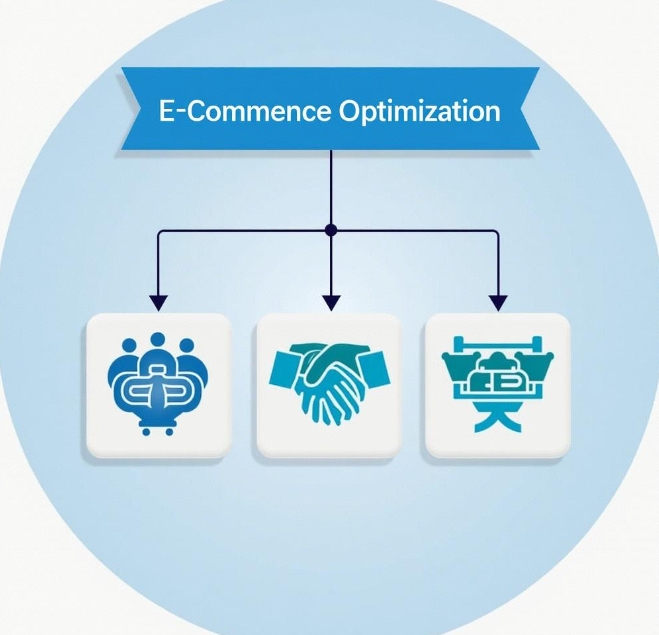Common Technical Challenges and Solutions in Mall Development
- latest articles
- 1.DApp Development & Customization: Merging Diverse Market Needs with User Experience 2.Analysis of the Core Technical System in DApp Project Development 3.How to achieve cross-chain interoperability in Web3 projects? 4.How does the tokenization of points reconstruct the e-commerce ecosystem? 5.How to Set and Track Data Metrics for a Points Mall? 6.What is DApp Development? Core Concepts and Technical Analysis 7.Inventory of commonly used Web3 development tools and usage tips 8.Development of a Distribution System Integrated with Social E-commerce 9.Six Key Steps for Businesses to Build a Points Mall System 10.What is DApp Development? A Comprehensive Guide from Concept to Implementation
- Popular Articles
- 1.Future Trends and Technology Predictions for APP Development in 2025 2.Analysis of the DeFi Ecosystem: How Developers Can Participate in Decentralized Finance Innovation 3.From Zero to One: How PI Mall Revolutionizes the Traditional E-commerce Model 4.DAPP Development | Best Practices for Professional Customization and Rapid Launch 5.Recommended by the Web3 developer community: the most noteworthy forums and resources 6.From Cloud Computing to Computing Power Leasing: Building a Flexible and Scalable Computing Resource Platform 7.How to Develop a Successful Douyin Mini Program: Technical Architecture and Best Practices 8.Shared Bike System APP: The Convenient Choice in the Era of Smart Travel 9.How to Create a Successful Dating App: From Needs Analysis to User Experience Design 10.From Design to Development: The Complete Process of Bringing an APP Idea to Life
In today's digital age, e-commerce has become an integral part of people's daily lives. Whether it's large-scale cross-border e-commerce or small local online stores, the development of shopping platform plays a crucial role. However, technical challenges during the development process are endless, and developers and teams often need to continuously address various technical bottlenecks and challenges. This article will delve into the common technical difficulties in shopping platform development and provide corresponding solutions to help developers complete e-commerce projects more efficiently and smoothly.
I. Common Technical Challenges in Shopping Platform Development
1. Performance Bottlenecks and Scalability Issues
As the number of users and traffic on shopping platforms increases, performance issues become particularly important. If the platform's response speed is slow or unable to handle a large number of user visits, both user experience and business benefits will be affected. Therefore, performance bottlenecks and scalability issues are often among the primary problems to solve in shopping platform development.
Performance bottlenecks in shopping platforms are mainly reflected in the following aspects:
High Server Load: Shopping platforms typically need to handle a large number of concurrent requests. If the server's processing capacity is insufficient, access delays or even crashes may occur.
Database Performance Issues: The data in shopping platforms is usually very large, and the efficiency of database queries directly affects platform performance. Especially under high concurrency, read and write operations on the database can easily cause bottlenecks.
2. Data Security and Privacy Protection
Shopping platforms need to handle a large amount of sensitive data, such as user information, payment data, and order information. Therefore, data security and privacy protection have become a top priority in shopping platform development. If the platform fails to effectively ensure data security, it may face severe consequences such as loss of customer trust and legal disputes.
Common data security issues include:
Payment Data Leaks: Sensitive data such as users' credit card information and payment passwords being stolen by hackers during transmission.
User Information Protection: Shopping platforms need to strictly protect users' personal information, such as names, addresses, and contact details, to prevent unauthorized access.
3. Multi-Platform Compatibility Issues
Modern shopping platforms often need to support multiple platforms, such as PC, mobile (iOS/Android), and even WeChat mini-programs. Different platforms have varying requirements for the shopping system, making multi-platform compatibility a technical challenge that cannot be overlooked.
Common multi-platform compatibility issues include:
Interface Adaptation Issues: Different devices have varying screen sizes and resolutions. Ensuring consistent display effects across various devices is a technical challenge.
Function Adaptation Issues: Functions may differ across platforms. For example, user interaction methods on PC and mobile devices vary, requiring functional adaptation to ensure a consistent user experience.
4. High Concurrency and Distributed System Architecture
Shopping platforms need to handle a large number of user requests and order data, especially during promotional events when high concurrent requests significantly increase system pressure. Poor architectural design can lead to system crashes, affecting the platform's normal operation.
Issues related to high concurrency and distributed system architecture mainly include:
Request Timeouts and Blocking: When the system cannot respond to user requests promptly, users may encounter issues like request timeouts or slow page loading.
Data Consistency Issues: In distributed systems, ensuring data consistency across different nodes is a challenge.
5. Search Engine Optimization (SEO)
SEO (Search Engine Optimization) refers to a series of technical measures aimed at improving a shopping platform's ranking in search engines, thereby increasing organic traffic. SEO issues for shopping platforms involve content structure, keyword selection, website speed, and more. Poor optimization can lead to reduced exposure and impact sales performance.
Common SEO challenges include:
Content Duplication Issues: If the content on a shopping platform is highly repetitive, search engines may classify the site as low-quality, lowering its ranking.
Page Loading Speed: Search engines have specific requirements for page loading speed. Slow-loading pages can negatively impact search rankings.
II. Solutions
1. Solutions to Improve Performance and Scalability
To enhance the performance and scalability of shopping platforms, development teams can adopt the following solutions:
Use Load Balancing: Deploying multiple servers and implementing load balancing can distribute traffic pressure, improving system response speed and stability. Common load balancing technologies include reverse proxy, DNS load balancing, and hardware load balancing.
Database Optimization: Optimize database performance through methods like database sharding, table partitioning, and caching mechanisms to reduce database pressure. For example, using caching technologies like Redis to store popular product information or user data can effectively reduce database read operations.
Use Microservices Architecture: Microservices architecture can modularize various functional components of the shopping platform, making it easier to scale as needed. Each microservice can be deployed independently, avoiding single points of failure and improving system scalability.
2. Strengthening Data Security and Privacy Protection
To ensure data security and user privacy on shopping platforms, the following measures can be taken:
Data Encryption: Encrypt sensitive user data (such as payment information) to prevent theft during transmission.
SSL Certificates: Deploy SSL certificates to enable HTTPS encryption, ensuring secure communication between the platform and users.
Access Control: Implement strict access control to ensure that only authorized users can access specific data or perform certain operations. For example, administrator and regular user permissions should be clearly separated to minimize the risk of data leaks.
3. Addressing Multi-Platform Compatibility Issues
To improve multi-platform compatibility, development teams can adopt the following strategies:
Responsive Design: Use CSS3 media queries to design responsive pages that adapt to different devices.
Cross-Platform Frameworks: Use cross-platform development frameworks like React Native or Flutter to enable code reuse across multiple platforms, reducing development workload.
Modular Functionality: Modularize the platform's functions to allow adjustments and optimizations based on the requirements of different platforms.
4. Handling High Concurrency and Distributed Architecture
To address high concurrency issues, shopping platforms can adopt the following technical solutions:
Distributed System Architecture: Adopt a distributed system to deploy various services across different nodes, improving system throughput and availability.
Asynchronous Processing: For requests that do not require real-time processing, use asynchronous methods to reduce system load. For example, order processing and email notifications can be handled asynchronously via message queues.
Distributed Caching: Use distributed caching (e.g., Redis, Memcached) to cache frequently accessed data, reducing database query pressure.
5. Enhancing SEO Optimization
To improve the SEO performance of shopping platforms, the following optimization measures can be taken:
Website Structure Optimization: Plan the website structure rationally to ensure that important pages can be effectively crawled by search engine spiders. Avoid excessive pop-ups or ads that may interfere with crawling.
Optimize Page Loading Speed: Use techniques like image compression, merging and compressing JS and CSS files, and lazy loading to improve page loading speed, enhancing both user experience and search rankings.
High-Quality Content: Regularly publish original and valuable content, avoiding copying others' work, to improve the site's credibility and ranking.
Conclusion
Shopping platform development is a complex technical task that requires continuous optimization and improvement across multiple aspects. From performance bottlenecks to data security, and from platform compatibility to high concurrency handling, each technical challenge directly impacts the platform's stability and user experience. Through reasonable architectural design, the application of optimization techniques, and good development practices, development teams can effectively address these challenges, providing users with a faster, safer, and more convenient shopping experience, thereby driving the successful development of the shopping platform.
-

How does the tokenization of points reconstruct the e-commerce ecosystem?
With the continuous advancement of internet technology and the gradual prolifera···
-

How to Set and Track Data Metrics for a Points Mall?
With the rapid development of the e-commerce industry, points malls, as a common···
-

Development of a Distribution System Integrated with Social E-commerce
With the rapid development of internet technology, the e-commerce industry has e···

 Blockchain
Blockchain












